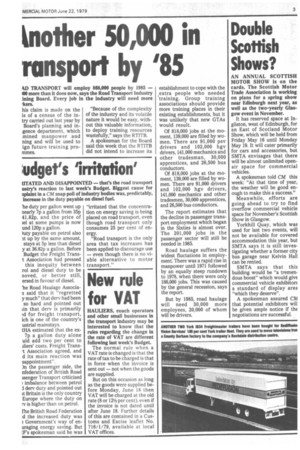knother 50,000 in runs port by '85
Page 5

If you've noticed an error in this article please click here to report it so we can fix it.
AD TRANSPORT will employ 868,000 people by 1985 — 100 more than it does now, says the Road Transport Industry ining Board. Every job in the industry will need more .kers.
his claim is made on the is of a census of the intry carried out last year by Board's planning and inigence department, which .mined manpower and fling and will be used to ign future training prommes. "Because of the complexity of the industry and its volatile nature it would be easy, without this valuable information, to deploy training resources wastefully," says the RTITB.
A spokesman for the Board said this week that the RTITB did not intend to increase its establishment to cope with the .extra people who needed training. Group training associations should provide more training places in their existing establishments, but it was unlikely that new GTAs would result.
Of 818,000 jobs at the moment, 139,000 are filled by women. There are 91,000 psv drivers and 102,000 hgv drivers, 141,000 mechanics and other tradesman, 30,000 apprentices, and 26,500 bus conductors.
Of 818,000 jobs at the moment, 139,000 are filled by women. There are 91,000 drivers and 102,000 hgv drivers, 141,000 mechanics and other tradesmen, 30,000 apprentices, and 26,500 bus conductors.
The report estimates that the decline in passenger transport employment which began in the Sixties is almost over. The 201,000 jobs in the passenger sector will still be needed in 1985.
Road haulage suffers the widest fluctations in employment. There was a rapid rise in manpower until 1971 followed by an equally steep rundown to 1978, when there were only 186,000 jobs. This was caused by the general recession, says the report.
But by 1985, road haulage will need 30,000 more employees, 20,000 of whom will be drivers.




























































































































































































